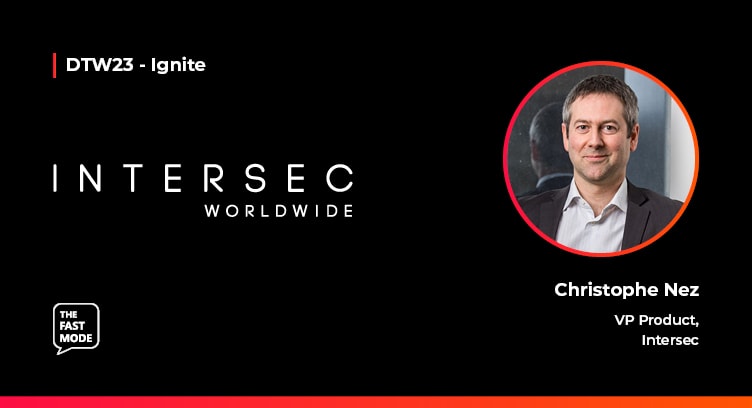With DTW23 - Ignite having successfully concluded last week at the Bella Center, Copenhagen, Ariana Lynn, Principal Analyst at The Fast Mode spoke to Christophe Nez, VP Product at Intersec. In the recent interview, Christophe shares his predictions for the telecoms industry for the next year, as well as his thoughts on open digital architectures and the convergence between telco and cloud.
Ariana: What are some emerging trends and technologies that you expect will power digital transformation in the telco space in the next year?
Christophe: Let's provide some context: Following a rapid expansion tied to subscriber increases, telcos have heavily invested in network modernization and faced fierce competition from OTTs. Regulations around data privacy, the 5G technological revolution, and the emerging role of telcos for mission-critical communications have completely shifted the market trends: telcos are just starting to redefine their role in a more promising environment.
- 5G introduces a new paradigm to connectivity and mobility as it enables high-accuracy and low-latency use cases and can boost top-line revenue growth with a privacy-conscious approach. Telcos are uniquely positioned to facilitate digital ecosystems on a national scale.
- Network location now derives tangible value: by combining on-demand precision and mass-scale coverage, our clients get granular and real-time location data from their whole consumer base.
- When coupled with advanced analytics, fast data processing, and AI capabilities, such information becomes a strategic asset for a variety of use cases such as hyper-targeted location-based advertising, predictive maintenance, sophisticated analysis of mobility patterns and population movements, national geostatistics etc.
In short, telcos become enablers of unprecedented innovation, while upholding privacy and compliance standards.
Ariana: How has the convergence of telco and cloud changed CSP monetization strategies? What are some new growth opportunities?
Christophe: That convergence empowers them to swiftly develop new services and tap into previously untapped avenues for income. By leveraging the versatility, scalability, and flexibility of cloud technology, telcos can benefit from heightened agility to innovate, generate fresh revenue streams, and enhance customer experiences. It truly marks a pivotal shift in the telecommunications landscape as it enables CSPs to redefine their value-creation approach by capitalizing on their unique access to comprehensive subscriber data. This data serves as a valuable resource for businesses seeking privacy-compliant insights into customer behavior.
The challenge lies in effectively harnessing data from various sources and responding swiftly to ensure an enhanced customer experience. CSPs have the opportunity to partner with other industries to leverage this data, allowing them to offer personalized services that cater to their subscribers' needs and preferences.
Ariana: What are your thoughts on open digital architectures, and what role do they play in supporting autonomous networks?
Christophe: Open digital architectures (ODA) are integral to reshaping telecoms, enabling seamless integration with new sectors like data monetization, operational efficiency, and hyper-targeted marketing. These architectures underpin agile business models, facilitating smooth interactions between telco systems and customer platforms, and driving innovation and revenue diversification. At Intersec, we are proud to be part of initiatives and collaborations that drive these architectures forward. Through organizations like ETSI, 3GPP, OMA, TM Forum, and CAMARA, we contribute to the creation of a connected ecosystem that fosters innovation, interoperability, and the realization of the full potential of autonomous networks. For example, Intersec actively contributes to CAMARA’s Device Location API working group for empowering mobile network operators with enhanced location capabilities.
Christophe Nez has more than 20 years’ experience in the technology and telecommunication sector across technical sales, engineering, and management. Prior to joining Intersec, he served 8 years within the Sagem mobile phones R&D division, leading the software development of several signature phones of the company. He also occupied several positions at eServGlobal in presales organization and product marketing, contributing to the company transformation from prepaid recharge business into mobile money and financial services. Christophe joined Intersec in 2013 as a product manager on geolocation portfolio. He now runs the entire product marketing team.




















